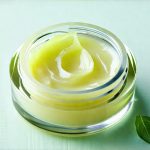Men’s skincare often gets overlooked, and even more so when it comes to sensitive skin. Many assume strong, abrasive cleansers are necessary for a “deep clean,” but this couldn’t be further from the truth—especially if you experience redness, itching, dryness, or breakouts after washing your face. The good news is that establishing a daily cleaning routine tailored to sensitive skin doesn’t need to be complicated or time-consuming. It simply requires understanding your skin’s unique needs and choosing products designed to nurture, not irritate. This article will guide you through building effective daily habits specifically for men with sensitive skin, focusing on gentle cleansing, hydration, and protection, ultimately leading to healthier, more comfortable skin.
Sensitive skin is often characterized by a compromised skin barrier, meaning it has difficulty retaining moisture and protecting itself from external irritants. This can be due to genetics, environmental factors, or even harsh skincare products. Recognizing the signs – frequent redness, stinging sensations, easily triggered rashes, or persistent dryness – is the first step toward building a routine that works with your skin, rather than against it. We’ll focus on creating habits that minimize irritation and maximize comfort, allowing you to achieve clean, healthy skin without compromise. Remember, consistency is key; even small daily changes can yield significant long-term results.
Gentle Cleansing: The Foundation of Sensitive Skin Care
The cornerstone of any skincare routine, especially for sensitive skin, is cleansing. However, the type of cleanser matters immensely. Harsh sulfates like Sodium Lauryl Sulfate (SLS) and Sodium Laureth Sulfate (SLES), commonly found in many mainstream face washes, can strip the skin of its natural oils, exacerbating dryness and irritation. Instead, opt for mild, fragrance-free cleansers specifically formulated for sensitive skin. Look for ingredients like glycerin, ceramides, or hyaluronic acid, which help to hydrate and strengthen the skin barrier. Creamy or oil-based cleansers are often gentler than foaming washes.
A common mistake is over-cleansing. While it’s important to remove dirt, oil, and pollutants, washing your face too frequently can further compromise the skin barrier. Twice daily – once in the morning and once at night – is generally sufficient. Avoid excessive scrubbing; gentle circular motions with fingertips are far more effective and less irritating. Consider a double cleanse in the evening if you wear sunscreen or heavy products throughout the day, starting with an oil-based cleanser to remove makeup/sunscreen followed by your regular gentle cleanser.
The water temperature also plays a crucial role. Hot water can strip away natural oils, leading to dryness and irritation. Always use lukewarm water for cleansing. After washing, pat your face dry with a soft towel – avoid rubbing – leaving a little moisture on the skin to help lock in hydration from your subsequent moisturizer. This seemingly small step makes a significant difference.
Choosing the Right Cleanser Ingredients
Navigating skincare ingredients can feel overwhelming, but understanding a few key terms will empower you to make informed choices. – Ceramides: These are naturally occurring lipids that help maintain the skin barrier and prevent moisture loss. – Glycerin: A powerful humectant, meaning it draws moisture from the air into the skin. – Hyaluronic Acid: Another excellent humectant capable of holding up to 1000 times its weight in water. – Aloe Vera: Known for its soothing and anti-inflammatory properties.
Conversely, be mindful of ingredients to avoid if you have sensitive skin: – Fragrance (synthetic or natural): A common irritant that can trigger allergic reactions. – Alcohol Denat.: Can be very drying and stripping. – Essential Oils: While marketed as “natural,” some essential oils can be highly irritating for sensitive skin. – Sulfates (SLS/SLES): As mentioned earlier, these are harsh detergents that disrupt the skin barrier.
When in doubt, patch test any new product on a small area of skin – like behind your ear or on your inner arm – before applying it to your entire face. Wait 24-48 hours to observe for any signs of irritation. This simple step can prevent significant discomfort and breakouts.
The Double Cleanse Method Explained
The double cleanse is particularly beneficial for removing stubborn impurities without harsh scrubbing, making it a great addition to the sensitive skin routine. Here’s how to do it: 1. First Cleanse (Oil-Based): Apply an oil cleanser – such as jojoba oil, grapeseed oil, or specifically formulated cleansing oils – to dry skin. Gently massage in circular motions for 60-90 seconds to dissolve makeup, sunscreen, and excess sebum. Rinse thoroughly with lukewarm water. 2. Second Cleanse (Gentle Cleanser): Follow up with your regular gentle cleanser designed for sensitive skin. This removes any remaining residue from the oil cleanse without stripping the skin. Again, use lukewarm water and pat dry.
This method effectively cleanses the skin without compromising its natural barrier. The oil-based cleanser lifts away impurities while the gentle cleanser provides a thorough yet delicate second step. It’s especially useful if you frequently wear makeup or sunscreen, but can benefit anyone with sensitive skin looking for a deeper cleanse. Remember to choose an oil cleanser that doesn’t contain fragrance or irritating additives.
Post-Cleanse Hydration: Locking in Moisture
Immediately after cleansing, your skin is most vulnerable to moisture loss. This is where hydration comes into play. Apply a moisturizer within 60 seconds of washing your face to lock in the remaining moisture and strengthen the skin barrier. Again, look for ingredients like ceramides, hyaluronic acid, or glycerin. Avoid heavily fragranced lotions or creams.
Consider using a facial serum before your moisturizer. Serums contain concentrated active ingredients that can address specific concerns, such as redness or dryness. For sensitive skin, serums containing niacinamide (to strengthen the barrier) or centella asiatica (to soothe inflammation) are excellent choices. Always patch test new serums before full application. The key is to build a routine that addresses your individual needs and respects your skin’s sensitivity – consistency and gentle care are paramount for achieving healthy, comfortable skin.





















